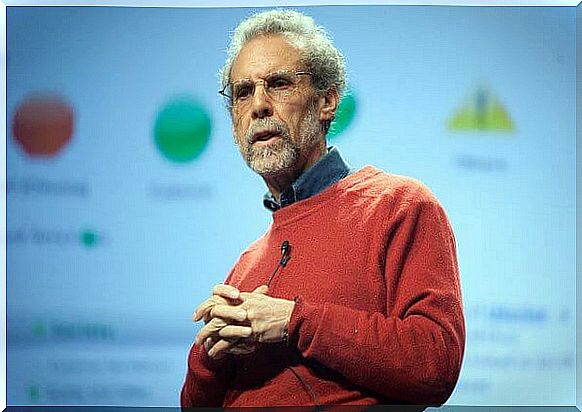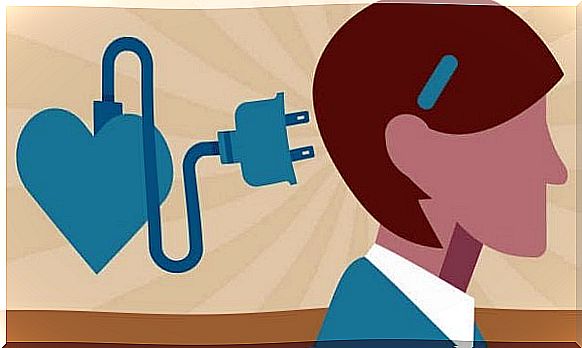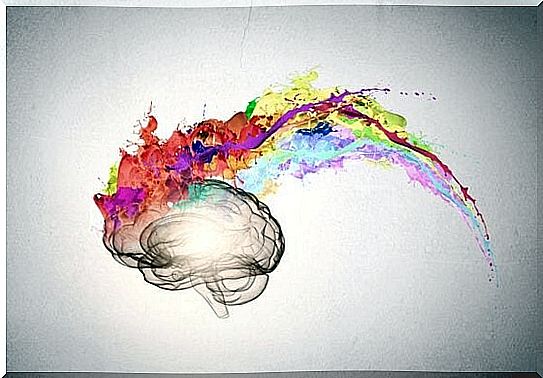Daniel Goleman And His Theory Of Emotional Intelligence

A brilliant brain and a high IQ are pretty useless if we do not understand empathy. If we do not know how to read our own feelings (and those of others), if we are strangers in our own hearts and lack the social awareness that allows us to form bonds, deal with fear and be determined… According to Daniel Goleman, emotional intelligence is the true key to happiness.
The debate about what is and is not intelligence still seems to continue. Empirical evidence confirms, for example, the existence of Spearman’s “G” factor, which is seen as a fundamental and vital basis that defines all intelligent behavior.
We also have the triarchic theory from Robert J. Sternberg, and of course Howard Gardner’s popular focus on several intelligences.
So where is the so-called emotional intelligence that Daniel Goleman is talking about? It may actually interest you to hear that the essence of this idea has always been there during the history of psychology.
Professor Goleman did not come up with it, but popularized it in 1995 in his book “Emotional Intelligence”, which has already sold more than five million copies. As early as 1920, for example, Edward L. Thorndike described what he called “social intelligence” —a basic ability to understand and motivate other people.
In the 1940s, David Wechsler then made it clear that no intelligence test is valid if the emotional aspect was not taken into account. Later, Howard Gardner himself laid the foundation with the seventh of his intelligences, the so-called interpersonal intelligence, which is undoubtedly very similar to emotional intelligence.
It took until 1985 before the term emotional intelligence first appeared in Wayne Payne’s doctoral thesis, named “A study of emotion: developing emotional intelligence” .
Just ten years later, an American psychologist and journalist named Daniel Goleman began what he is still working on today. It helps us understand the great power of emotions and what we are, what we do and how we relate.

Daniel Goleman started as a journalist at The New York Times and is today a guru of emotional intelligence. He is now in his 70s, and his calm smile and penetrating gaze still hold our attention.
It is as if he has always been able to see beyond the rest of us; a man who does not miss details, who finds connections where the rest of us only see coincidences.
He always says that his passion for psychology comes from his mother – a social worker specializing in psychiatry. She collected books on neuroscience, the human mind and the behavioral sciences. These books were his childhood and daily life.
For a time, they were nothing more than obscure texts he read with inexplicable fascination. Later, however, they became his motivation and a path to who he is now: the greatest popularizer of social intelligence.
It is a way of seeing intelligence beyond its cognitive aspects (such as memory and problem solving). We mainly talk about our capacity to effectively address others and ourselves, to connect and manage our emotions, to self-motivate, to slow down our impulses, to overcome frustrations…
Goleman explains that there are four basic dimensions to his view of emotional intelligence:
- The first is self-awareness. It refers to our ability to understand what we feel, to have a connection to our values, our essence.
- The second aspect is self-motivation and our ability to orient ourselves towards our goals, to recover from setbacks, to deal with stress.
- The third has to do with our social awareness and empathy.
- The fourth link is undoubtedly the “stone” of emotional intelligence: our ability to relate, communicate, reach agreements, and create positive as well as respectful bonds with others.

Daniel Goleman reminds us in his books of the need to have skills in these four areas. Otherwise, for example, you get a person who is trained in emotional intelligence, but who has only reached self-awareness without the ability to feel empathy with others. We should therefore see these four areas as a whole.
In his books “Emotional Intelligence” (1995) and “Social Intelligence” (2006), the author explains that part of this ability, this capacity, is found in our own epigenetics. It can thus be activated and deactivated depending on the emotional and social environment we grow up in.
But here lies the true magic. Emotional intelligence also has to do with the plasticity of the brain, where stimuli, continuous practice and systematic learning create changes and connections. We can become much more skilled in all four of these areas.

Daniel Goleman also points out the need to raise children accordingly. When it comes to the adult world, we know that there is no shortage of seminars, books and other types of training.
It is about will and perseverance in the exercise of the keys that Professor Goleman writes about:
- We must discover the feeling behind all our actions.
- We need to expand our emotional language ( sometimes it is not enough to say “I’m sorry”, we need to be more specific. “I’m sorry because I feel disappointed, a little angry and confused at the same time”).
- Check what you are thinking to control how you behave.
- Look for reasons behind the behavior of others, be able to understand their views and feelings.
- Express your feelings firmly.
- Improve your social skills.
- Learn to motivate yourself and fight for the things that can bring you closer to happiness.
In conclusion , intelligence involves more than just IQ, and success depends on all of these factors. We talk about personal success where we connect better with others, where we live in balance and harmony and feel capable, free, happy and personally fulfilled. It’s an adventure!
Bibliographic references:
-Daniel Goleman (1995) Emotional Intelligence: Why It Can Matter More Than IQ
-Daniel Goleman (2011) The Brain and Emotional Intelligence: New Insights









